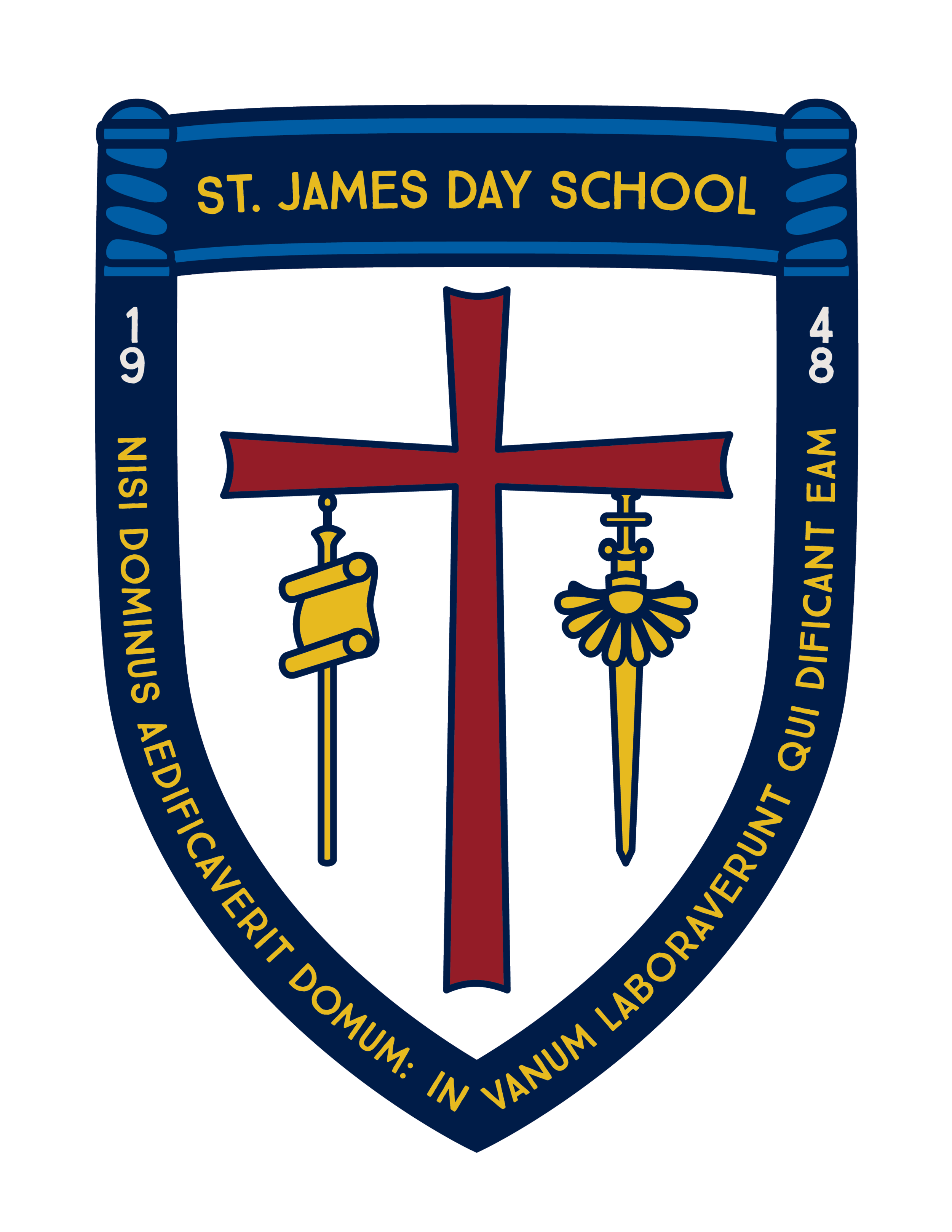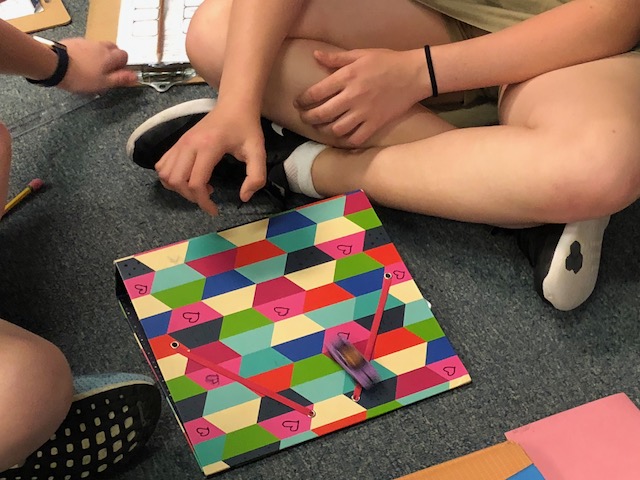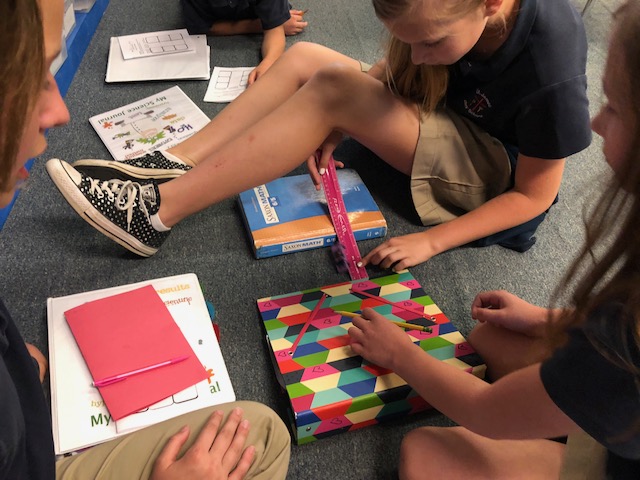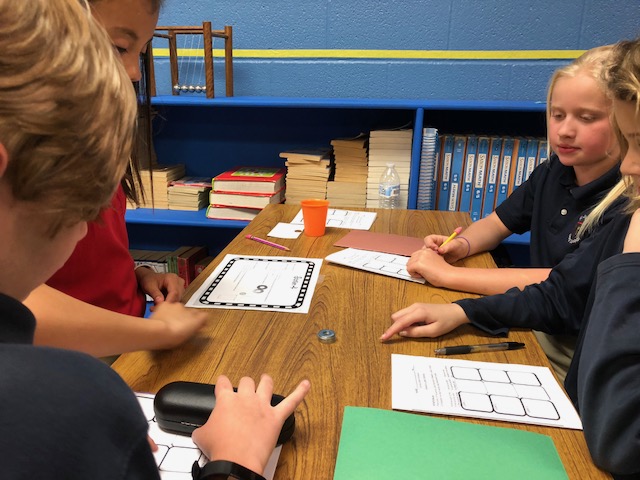MATH AND SCIENCE:
Boom!
We have been building “boomilevers” in science with the help of Mrs. Denise. A boomilever is an architectural structure that is supported on one side only, a combination of a boom and a cantilever. We applied our knowledge of force and leverage in attempts to create the strongest, lightest, most efficient structure. Next we will complete the engineering design process by returning to the drawing board to see how we can improve what we made.
“My favorite thing this week was making the boomilevers. I really liked doing this because it was a really great learning experience for me to learn. I also really liked it because I have never done something like this before and it was really fun and exciting.” ~Morgan
LANGUAGE ARTS AND HISTORY:
Fifth graders are learning the value of close reading. We have initiated the practice of reading a passage multiple times over the course of a few days in an effort to deepen comprehension. The students are engaging with the text well--interesting fiction and non-fiction passages make the reading more pleasurable. Working as a whole class and in small groups, students must think not only about characters, theme, and point of view, but they must also determine word meanings in context and cite evidence directly from the text. This process not only requires more analysis, but it also helps students to practice paraphrasing for writing essays. I am seeing the benefits of close reading in the students’ enthusiasm and their well-constructed responses.
Next week, we will apply this skill to our thirteen colonies unit in history. I look forward to witnessing how much students absorb in these future readings because the information and knowledge they will learn is essential to our Colonial Living History project in December.





























